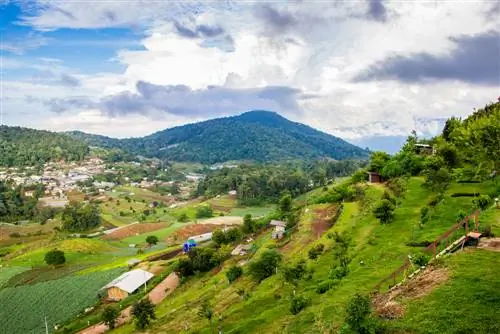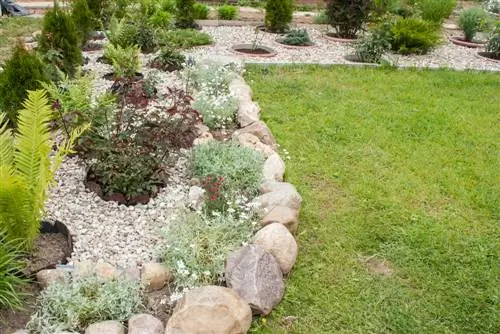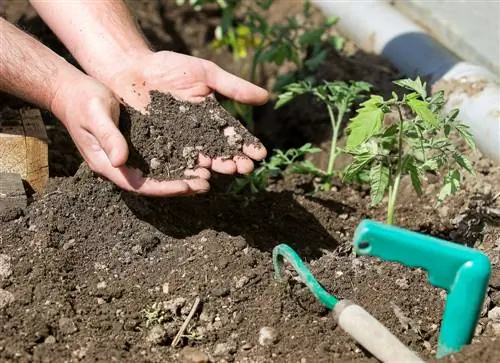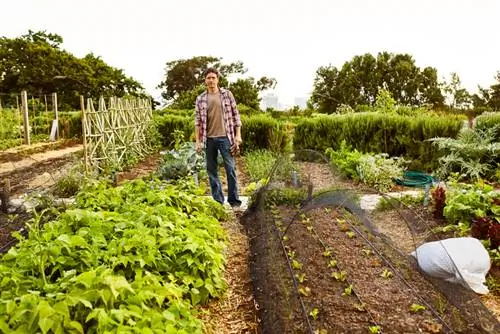- Author admin [email protected].
- Public 2023-12-16 16:46.
- Last modified 2025-01-23 11:21.
The vegetables are usually cultivated in shallow beds. However, this is not possible in all regions, especially in slightly hillier or mountainous areas, the gradient within the garden area can be considerable. This article is intended to give you some suggestions for the sensible and aesthetic design of a vegetable garden on a hillside.
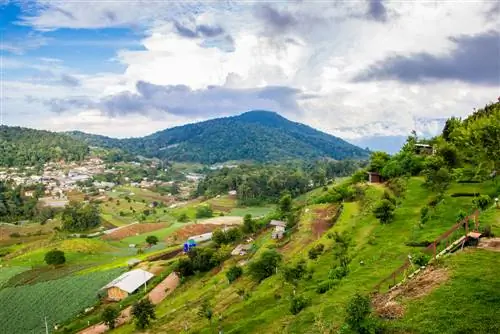
How do you design a vegetable garden on a hillside?
When designing a hillside vegetable garden, retaining walls, terracing and stairs can help create a flatter growing area. Depending on the angle of inclination and height difference, different measures must be implemented to achieve optimal lighting and irrigation conditions.
Advantages and disadvantages of a hillside location
If you own a property on a slope and perhaps build your house above the slope, you can look forward to a wonderful view. Especially if you have a particularly beautiful view of the surrounding landscape from your terrace at home. But even those who have their house in the middle of a slope or even under the embankment are happy about the advantages: Here you have a great view of your own garden - but others don't. The atmosphere is very protected and intimate. A kitchen garden is best planted where the sun's rays are highest. This is usually the case at the top of a slope. However, we do not want to hide the fact that slope gardens also have serious disadvantages:
- Depending on the angle of inclination, the property can hardly be worked on without stairs.
- In addition, extensive construction work often has to be carried out.
- This applies, for example, to retaining walls that are intended to prevent the slope from slipping.
- The lighting conditions vary greatly in slope gardens.
- Not all areas are suitable for a vegetable garden.
- Sometimes certain areas are difficult to maintain: here the vegetation has to be left to its own devices.
- Watering a hillside garden is difficult.
- While the top of the slope is often dry, the water collects at the foot of the slope.
- Ergo, good drainage must be buried in the ground.
Design options for a slope garden
An evenly shaped slope with a slight slope does not need to be worked too hard. Light modeling is often sufficient here, for example by building a single retaining wall. This then shifts the garden to two levels, one of which can be used for the vegetable garden and the other for flowers, perennials and relaxation. If the terrain is steeper, you can use several low walls to terrace the slope more, i.e. H. flat steps are created. Stairs provide a connection between the individual terraces.
Tip
However, if the height to be overcome exceeds one meter or more, the railing must be supported more strongly. Dry-placed stones (such as a dry stone wall) are then no longer sufficient. Depending on the height, you will then need concrete foundations.

